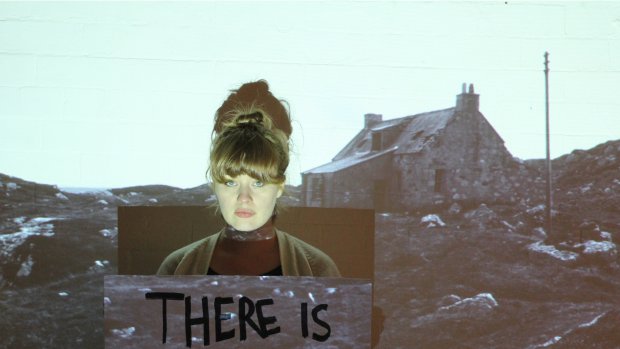
I first came across the sound work of Isobel Anderson through her inclusion in a recent Sound and Music sampler selection. Her work interested me for several reasons - its links with aspects of my own practice, its poetic quality, its interest in nature and the traces of human intervention in the landscape.
Her sound diaries are recorded as she walks through various rural locations (such as the Isle of Harris on her piece These Places should only ever be imagined ) but also include material edited later in some cases. We are invited to share her intimate thoughts, and my feeling is that these works may well be best experienced by listening through headphones, thereby creating a shared medium of recording and listening between creator and listener. With headphones the voice of a speaker goes straight into your head creating a feeling of intimacy which is different from speakers in installations. Yet alas, headphones are sometimes viewed as “the easy way out” by some curators and critics, rather than possibly a consciously chosen part of the artist’s strategy.
I feel very sympathetic to Anderson’s view of sound recording as a performative act. Going to a site in person rather than finding online sound sources turns the recording not just into a record of a personal diary but a testimony spoken by a witness. The experience of a specific site selected for its particular forms of resonance….atmospheric, historical, emotional etc is translated for us through the artist’s body and comes alive through her. The evocative and slightly melancholic “grain” of the voice, as Roland Barthes describes it, has its own rhythms, as does her body.
In listening to her was I was occasionally reminded of aspects of the series of “country diaries” published in The Guardian. Often these short pieces are like prose poems, where an observer visits a site of natural and historical interest, encountering wildlife but also traces of old railways, industrial buildings and abandoned dwellings, around which the life of nature continues, and will do so long after the human visitor has quit the scene.
We hear Anderson’s voice and wonder if this is what happened to her. Did she really go to these places? Did she return? Or should These Places should only ever be imagined ?
Photo credit: Miguel Martin